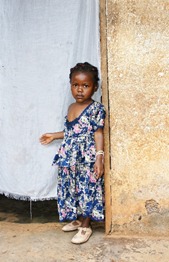
Over the past several years, child mortality has started to steadily decline in virtually every country worldwide. This significant drop can be attributed to several factors, the most notable ones being access to basic human needs such as food and potable water and good healthcare.
From 1990 to 2015 the world saw a 53% decline in the estimated deaths per 1,000 live births for children under five. (Source: www.npr.org)
In 2016, in countries such as the United States and Belgium, respectively, the number of child deaths under the age of five dropped to 7 out of 1,000 (in the U.S.) and to 4 out of 1,000 (in Belgium), as compared to 1960, when the numbers were 30 (in the U.S.) and 34 (in Belgium) (The World Bank, 2018).
However, it is still an ongoing struggle for countries in many parts of the world striving to satisfy basic needs. A perfect illustration is sub-Saharan Africa, where despite being home to some of the world’s most valuable and coveted resources, including gold, diamond, oil, and uranium, just to name a few, this region located south of the Sahara Desert is arguably one of the poorest regions worldwide.
Things like poverty, diseases, and malnutrition are rampant, consequently stacking the deck against newborn babies and children under the age of five, the most vulnerable members of society.
In a research paper titled, “Sub-Saharan Africa's Mothers, Newborns, and Children: Where and Why Do They Die?”, authored by Mary V. Kinney, Kate J. Kerber, Robert E. Black, Barney Cohen, Francis Nkrumah, Hoosen Coovadia, Paul Michael Nampala, and Joy E. Lawn, members of a “Science in Action” working group that focuses on saving the lives of Africa’s mothers, newborns, and children, states that “every year 4.4 million children—including 1.2 million newborns—and 265,000 mothers die in sub-Saharan Africa. This amounts to 13,000 deaths per day or almost nine deaths every minute. Sub-Saharan Africa has half of the world's maternal, newborn, and child deaths” (Kinney, et al., 2010).
With these unfortunate high mortality rates, one could question whether child mortality rates are improving, or potentially getting worst? Although it may be hard to believe, significant progress has been made in recent years. A good example to look at is the number of deaths from specific circumstances, such as Malaria. As mentioned above, children under five are very vulnerable, and as such, they “are particularly susceptible to infection, illness and death. More than two thirds (70%) of all malaria deaths occur in this age group. In 2015, about 303,000 African children died before their fifth birthdays” (World Health Organization, 2016). However, despite being the region that is the most affected by this illness, Africa is also the region that experienced the highest decrease in infections and deaths. As a matter of fact, “from 2000 to 2015, African deaths from malaria were reduced from 764,000 to 395,000” (Ritchie, 2017), a decrease of almost 50%.
Several actors can be credited for the progress that has been made in terms of malaria prevention and treatment, and also in terms of tackling other causes of child and infant mortality. In view of the magnitude of such causes and their prevalence across the region, no one entity is capable or even equipped to address all the problems affecting the well-being of children. Consequently, in many sub-Saharan countries, governmental agencies, private corporations, and nonprofit organizations are coming together to get the job done and give children, especially those in remote places with limited access to basic infrastructure, a fighting chance. Some of those organizations are local, some are international.
The World Forgotten Children Foundation (WFCF) is one of them. Its mission, which is “supporting projects that promote the health and welfare needs of orphaned children with disabilities in developing countries” aligns perfectly with the needs of many of those disadvantaged children in sub-Saharan Africa. Even though it is primarily focused on “providing helping hands” to orphans with a disability, the importance of its mission and the reach of its projects cannot be stressed enough. From providing wheelchairs to disabled children in Zambia to providing textbooks to students with albinism in Tanzania, the WFCF strives to make a difference in children’s lives every day.
All in all, it is primordial to take care of children, especially the most vulnerable and disadvantaged ones, for they are the future. Indeed, they are the leaders of tomorrow.
Sources
Beaubien, Jason (2015, September 8). How Many Children Under 5 Die A Year In The U.S. vs. Angola? Retrieved from www.npr.org (2018, June 27): https://www.npr.org/sections/goatsandsoda/2015/09/08/438657898/how-many-children-under-5-die-a-year-in-the-u-s-vs-angola
Kinney, M. V., Kerber, K. J., Black, R. E., Nkrumah, F., Coovadia, H., Nampala, P. M., & Lawn, J. E. (2010, June 21). Sub-Saharan Africa's Mothers, Newborns, and Children: Where and Why Do They Die? Retrieved from PLOS Medicine: http://journals.plos.org/plosmedicine/article?id=10.1371/journal.pmed.1000294
Ritchie, H. (2017, December). Malaria. Retrieved from Our World in Data: https://ourworldindata.org/malaria
The World Bank. (2018, June 5). Mortality rate, under-5 (per 1,000 live births). Retrieved from The World Bank: https://data.worldbank.org/indicator/SH.DYN.MORT
World Health Organization. (2016, December). 10 Facts on Malaria. Retrieved from World Health Organization: http://www.who.int/features/factfiles/malaria/en/


